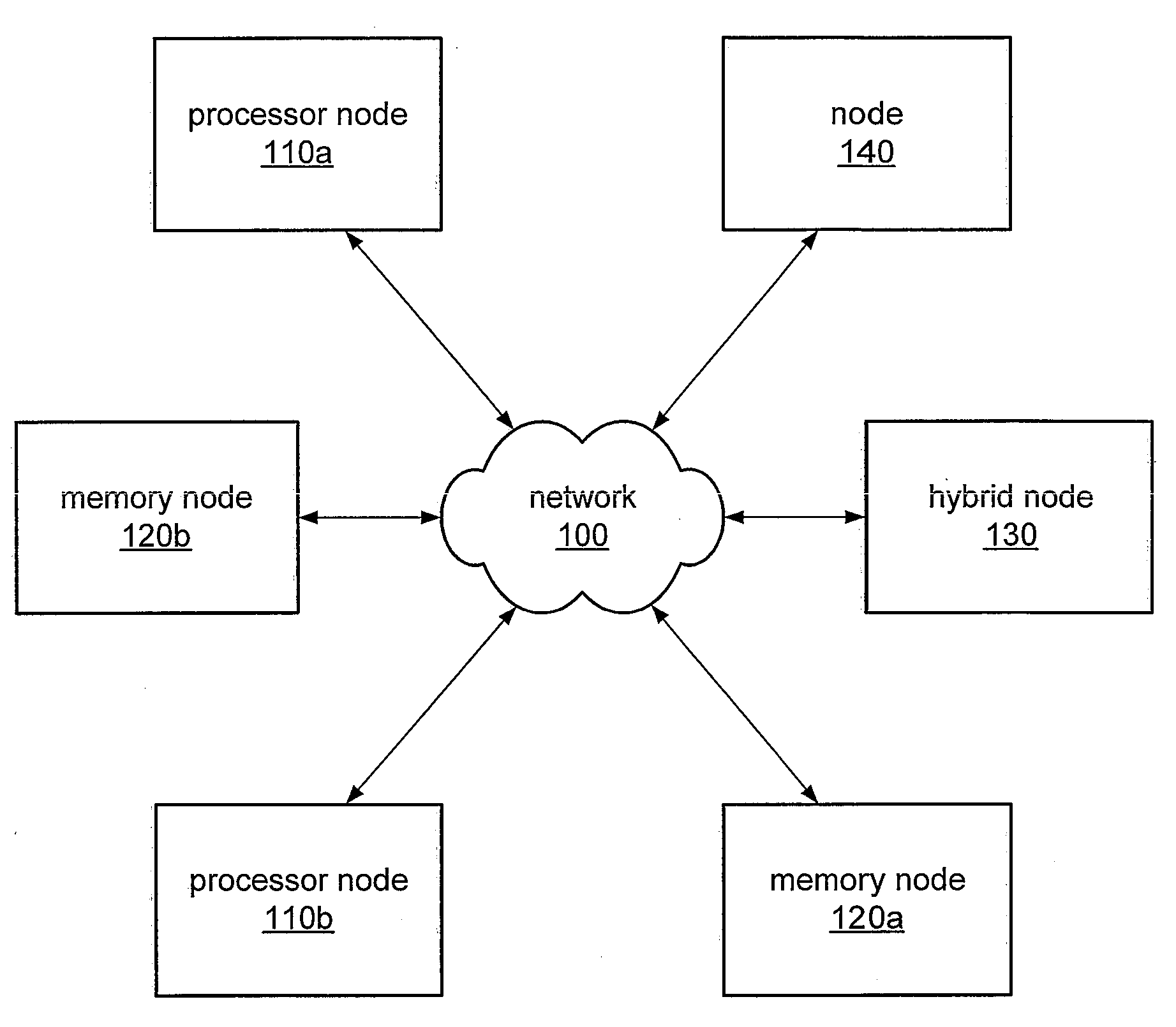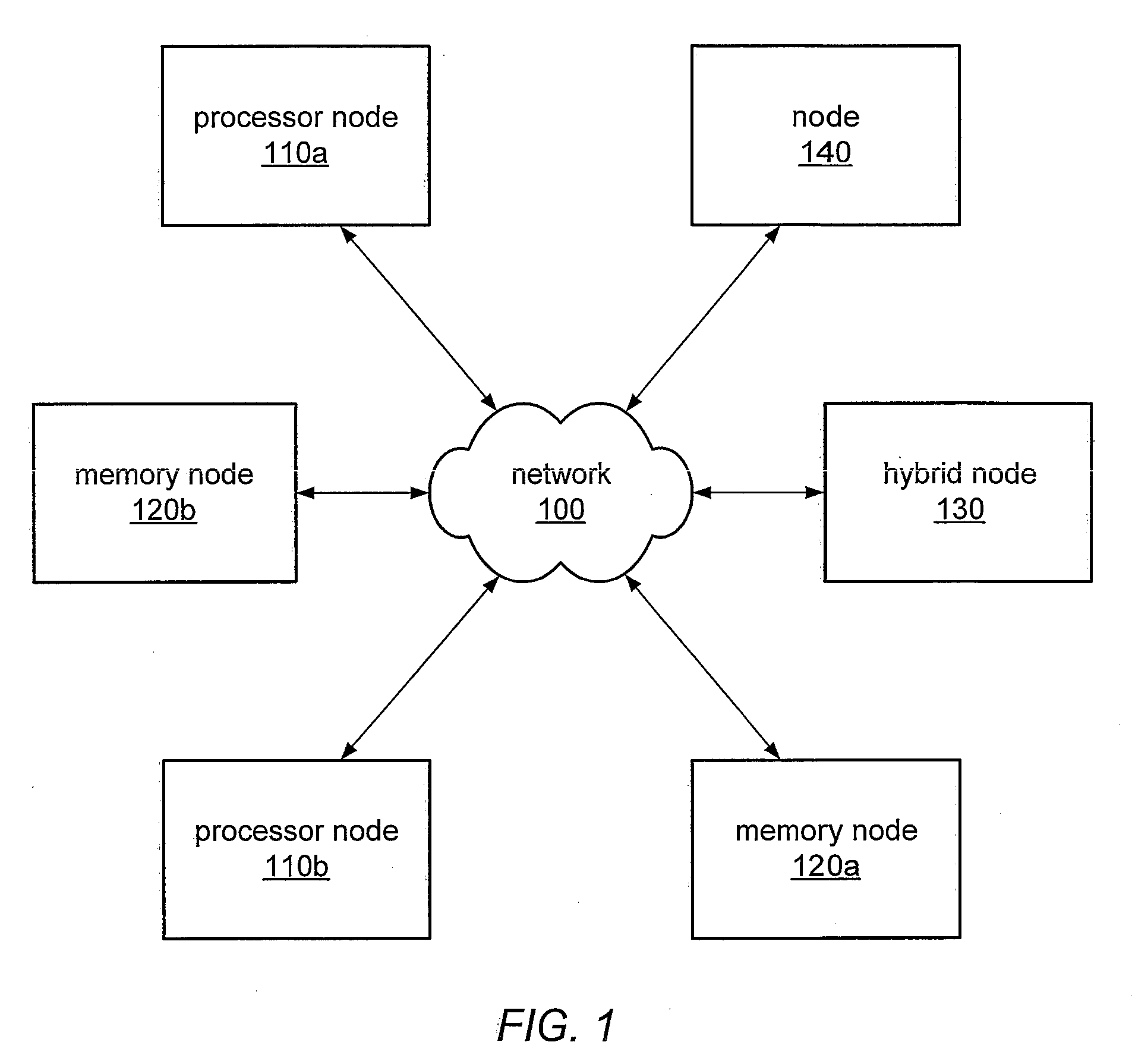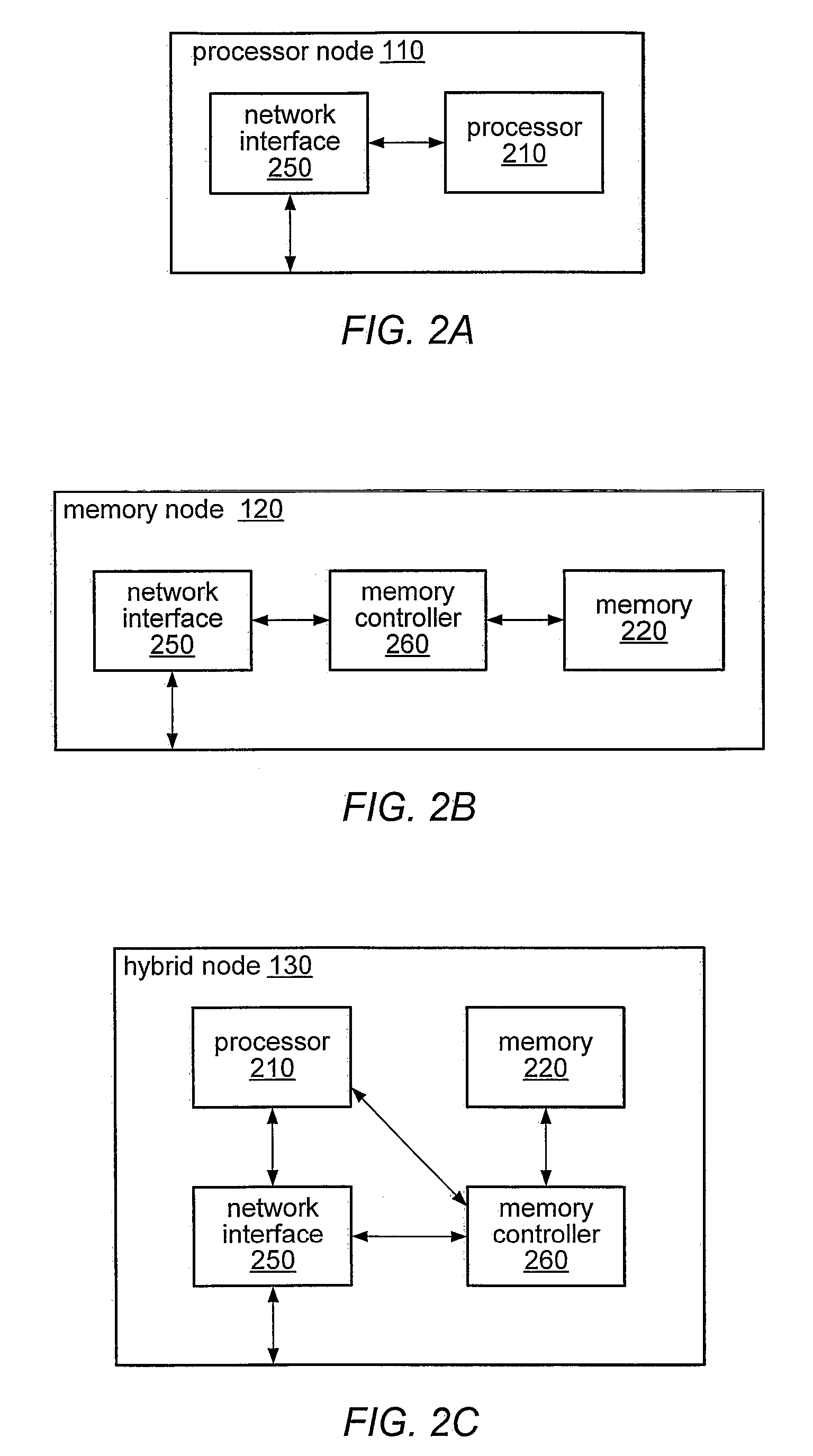Resource Reservation Protocol over Unreliable Packet Transport
a resource reservation and packet transport technology, applied in the field of computing systems, can solve the problems of not being able to efficiently scale to large systems, not providing flexibility in terms of the amount of memory available for any one process, and negatively affecting system performance, so as to increase the number of network hops
- Summary
- Abstract
- Description
- Claims
- Application Information
AI Technical Summary
Benefits of technology
Problems solved by technology
Method used
Image
Examples
Embodiment Construction
[0031]In various embodiments of a distributed shared memory (DSM) system comprising one or more processors, a separate (local) memory may be provided for each processor, but each processor may also be able to access non-local memory, such as a shared block of main memory. Some DSM systems employ non-uniform memory access or non-uniform memory architecture (NUMA). Under NUMA, the memory access time for any given access depends on the location of the accessed memory relative to the processor accessing it. In such systems, a processor may be able to access its own local memory, such as its own cache memory or a memory co-located with the processor on the same integrated circuit device or printed circuit board, faster than it can access non-local memory. In these systems, non-local memory may include one or more banks of memory shared between processors and / or memory that is local to another processor. One example of a system that might employ a NUMA architecture is an application serve...
PUM
 Login to View More
Login to View More Abstract
Description
Claims
Application Information
 Login to View More
Login to View More - R&D
- Intellectual Property
- Life Sciences
- Materials
- Tech Scout
- Unparalleled Data Quality
- Higher Quality Content
- 60% Fewer Hallucinations
Browse by: Latest US Patents, China's latest patents, Technical Efficacy Thesaurus, Application Domain, Technology Topic, Popular Technical Reports.
© 2025 PatSnap. All rights reserved.Legal|Privacy policy|Modern Slavery Act Transparency Statement|Sitemap|About US| Contact US: help@patsnap.com



